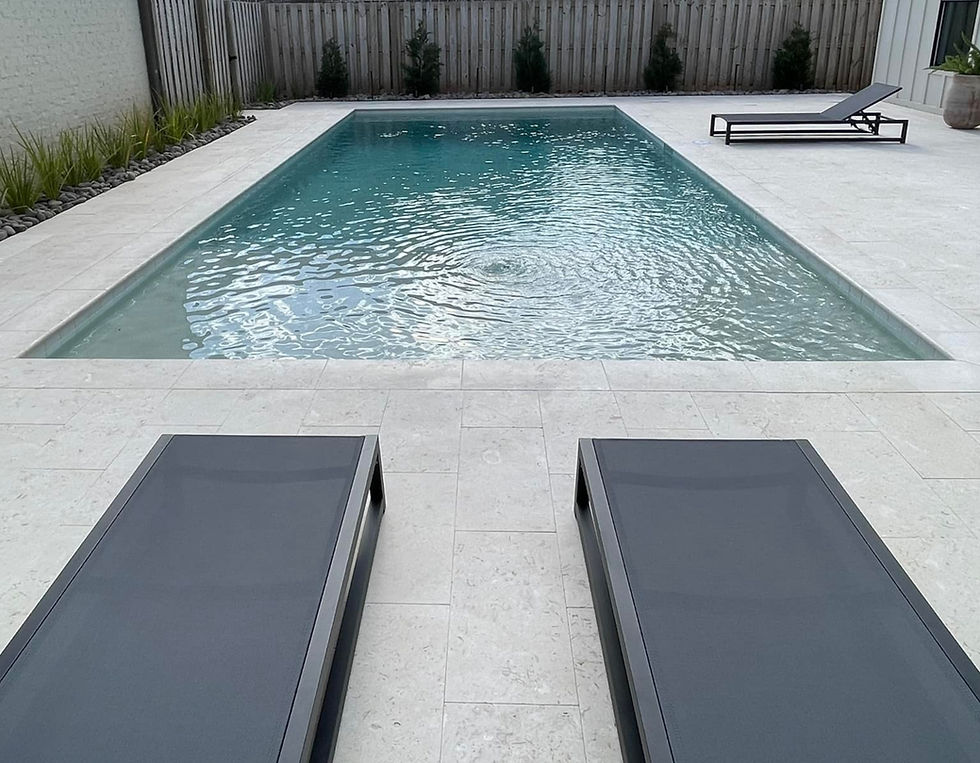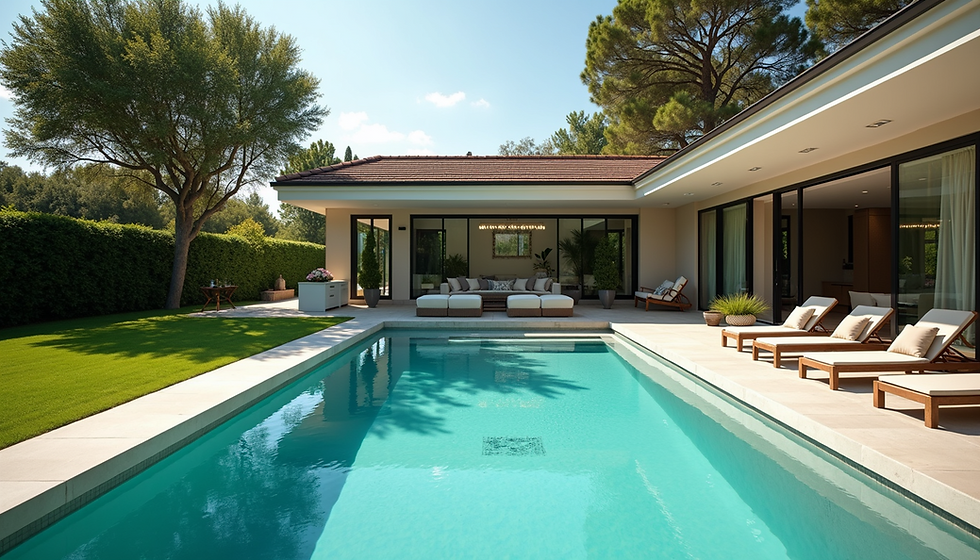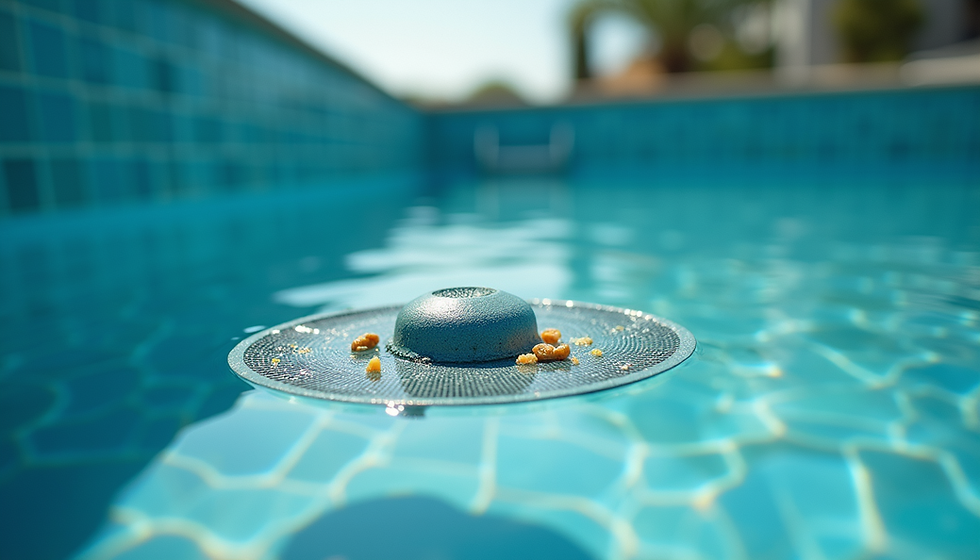Key Considerations When Building a Backyard Pool
- Jared Alford
- Jul 14
- 4 min read
Building a backyard pool is an exciting venture that transforms your outdoor space into a personal oasis. However, this process involves careful planning and consideration to ensure that you create a safe, enjoyable, and aesthetically pleasing environment. In this blog post, we will discuss the key elements of pool construction, from selecting the right location to understanding the necessary permits.
Understanding Your Purpose for a Pool
Before diving into the technical aspects of pool construction, it's essential to clarify why you want a pool. Are you looking for a place to relax, exercise, or entertain guests? Each purpose may influence different design choices. For instance, if you plan to swim for fitness, you might opt for a longer pool design with a lap lane feature. Conversely, for family gatherings, a larger pool with shallow areas for children could be more appropriate.

By determining your primary use, you can better assess the style, size, and features that will best serve your needs.
Choosing the Right Location for Your Pool
One of the most critical elements in pool construction is selecting the right location. When choosing a spot, consider factors such as sunlight, privacy, and ease of access. You’ll want a location that gets enough sunlight to keep the pool warm and inviting, but also one that offers some shade during the hottest parts of the day.
Sunlight and Shade
Pools that receive ample sunlight are generally easier to maintain in terms of temperature. Planning around existing trees can provide natural shade, but you'll need to regularly clean debris that may fall into the pool.
Privacy and Noise Levels
A pool located near a busy street or in front of your home may compromise your privacy. You might want to consider erecting a fence or planting tall shrubs to create a more secluded atmosphere. Additionally, think about noise levels; a pool near a loud road may not be as relaxing as one tucked away in a quiet corner of your yard.
Budgeting for Your Pool
Budgeting is one of the key steps in the planning process. The cost of pool construction can vary widely based on factors like design, materials, and additional features. Setting a realistic budget will help you understand what you can afford without compromising essential elements.
Initial Costs
Make sure to include all potential costs in your budget, such as excavation, materials, labor, and permits. It's advisable to get multiple quotes from contractors to find a price that fits your budget.
Ongoing Maintenance
Remember to account for ongoing maintenance costs, such as utilities, chemicals, and repairs. On average, maintaining a pool can cost anywhere from $50 to $200 per month, depending on its size and features.

Selecting Materials and Pool Types
The material you choose for your pool will significantly impact its durability, design, and maintenance. The main types of pools on the market are concrete, fiberglass, and vinyl. Each type has its pros and cons.
Concrete Pools
Concrete pools are highly customizable and can be designed in virtually any shape and size. However, they often require more maintenance and can be the most expensive to install.
Fiberglass Pools
Fiberglass pools come pre-formed and are easy to install, generally taking less time than concrete options. They are low-maintenance but come with a limited selection of shapes and sizes.
Vinyl Pools
Vinyl pools offer a cost-effective alternative that allows for customization while being easier to maintain than concrete pools. However, the liners may need replacement every 5 to 9 years, an important factor to consider in your budget.
Planning for Safety
When building a backyard pool, safety should be a top priority. This means not only ensuring that you use quality materials and hiring reputable contractors but also implementing safety measures for both children and adults.
Fencing and Covers
One of the most effective ways to keep children safe around a pool is to install a secure fence with self-closing gates. Pool covers can also provide an added layer of security during the off-season.
Educating Family and Guests
Installing Pool Alarms
Consider investing in pool alarms which sound an alert if someone enters the pool without permission. Educating family and guests about pool safety protocols can go a long way in preventing accidents.
Obtaining Permits and Following Local Regulations
Before commencing any work, ensure that you understand the zoning laws and building codes in your area. Many municipalities require permits for pool installations, and failing to obtain these could result in fines or complications in the future.
Research Local Requirements
Check with your local building department for specific requirements concerning fencing, drainage, electrical work, and plumbing. You may also want to consult neighborhood associations, as they might have additional rules or guidelines for backyard renovations.

Enjoying Your New Pool
Finally, once your pool is completed, take the time to appreciate all the labor and planning that went into your backyard paradise. Now is the perfect time to throw that inaugural backyard barbecue or pool party.
Engage your family and friends in the joy of having a pool, and create unforgettable memories. Building a pool is not just about the structure; it's about enhancing your lifestyle and creating a welcoming space for relaxation and recreation.
Building a pool is a significant investment and an exhilarating experience. By considering the factors discussed in this guide, you can ensure that your backyard pool construction project goes smoothly. For further assistance and design ideas specific to your situation, you can explore more about backyard pool construction. Happy pool planning!
.png)



Comments